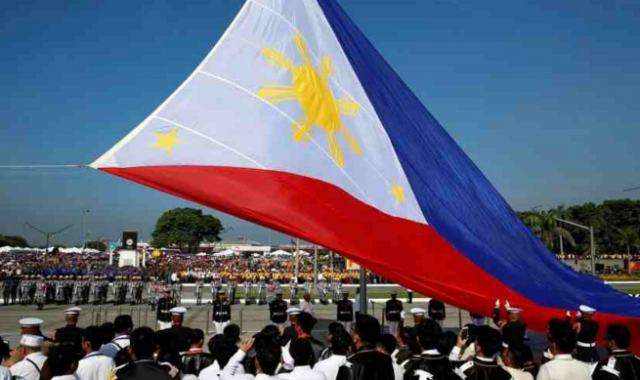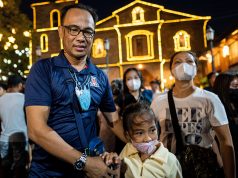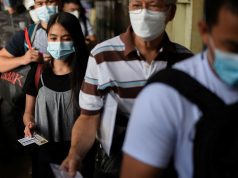The Aquino’s administration‘s handling of the Super Typhoon Yolanda in 2013 was recalled online after some Filipinos called for the government’s transparency on its response to the novel coronavirus pandemic in the country.
Twitter user @theluciasilva made the recap of the aftermath of the super typhoon and claimed that there was a discrepancy in the death counts then.
The online user also attached photos of the tragedy from online news articles.
“Never forget Typhoon Yolanda in 2013 when the Aquino administration pegged the total deaths at 6,000 when the real numbers rose as high as 15,000,” the user said.
“Thousands die, rotting in unmarked makeshift mass graves, unreported, forgotten, just so the government could claim it has everything under control,” she added.
never forget typhoon yolanda in 2013 when the aquino admin pegged the total deaths at 6,000 when the real numbers rose as high as 15,000. thousands die, rotting in unmarked makeshift mass graves, unreported, forgotten, just so the govt could claim it has everything under control. pic.twitter.com/auSNMX4yZX
— Lucia (@theluciasilva) April 11, 2020
Typhoon Yolanda (international name typhoon Haiyan) was considered as among the most powerful storms of all-time after nearly wiping out the group of islands in Visayas and affected more than 14 million in its path.
Government relief agencies that time pegged the death toll at around 6,000 with 1.800 missing bodies.
However, in 2015, a Roman Catholic priest who came from Tacloban in Eastern Samar countered the figure and claimed at a Holy Mass celebration that more than 15,000 people died during the typhoon’s onslaught.
Activist Mon Sy likened the Yolanda death toll to the number of COVID-19 deaths being reported by the Department of Health.
“And now, hundreds are dying without even being recorded by the national census. They’re not in the list of COVID-19 deaths because they died before testing,” he said.
And now, hundreds are dying without even being recorded by the national census.
They're not in the list of COVID-19 deaths because they died before testing.
The government has everything "under control". https://t.co/k8NNwqRjBW
— Mon Sy #OustDuterteNow (@YearoftheMonSy) April 12, 2020
Due to the lack of supply of testing kits, thousands of suspected cases of COVID-19 have remained untested and quarantined in several hospitals and other facilities in the country.
Those who get tested unfortunately passed away even before knowing their COVID-19 status, and consequently unable to receive proper treatment.
Conversations on Yolanda and COVID-19 deaths came after veteran broadcast journalist Arnold Clavio bared that an unnamed hospital, which later turned out to be the East Avenue Medical Center, was being ordered to conceal its COVID-19 death toll.
Clavio’s source also allegedly claimed the hospital has a shortage in body bags and needed additional space after a surge in dead bodies.
The GMA broadcaster later announced that an organization donated a refrigerated container van, which was once used for food storage, to serve as temporary freezer for the cadavers.
Demand for transparency
Germany-based non-governmental organization Transparency International cited shortages in supplies, test results and development of medicines and vaccines as among the information that governments should tell their people to save more lives in this pandemic.
“Transparency International urges governments to act with greater transparency to improve the procurement of lifesaving medicines and vaccines, promote open and transparent contracts, prevent price gouging of drugs and medical supplies, and share information about important drug shortages in a timely way,” the organization said.
“In addition, governments should improve transparency of clinical trial data so that scientists can build on existing research instead of starting from scratch,” it added.
A historian also echoed the importance of transparency as among the lessons countries should have learned during the 1918 influenza epidemic, considered one of the worst health crisis in recent history.
Historian John M. Barry said that people back then lost faith in the government and consequently made it harder for their leaders to implement public health measures.
“If trust collapses, then it becomes everyone for themselves, and that’s the worst instinct in a crisis of this scale,” Barry was quoted by Vox as saying.
He also described the worst scenarios that happened that time.
“Some places managed much better than others, of course. But the Red Cross reported instances of people starving to death in rural communities because everybody was afraid to bring them food—the panic and the fear was that intense. It stretched society to the absolute brink,” he said.
The World Health Organization earlier noted that the new virus is deadlier than previous pandemics, including the H1N1 in 2009.
“We know that COVID-19 spreads fast, and we know that it is deadly, 10 times deadlier than the 2009 flu pandemic,” WHO chief Tedros Adhanom Ghebreyesus said.
Countries perceived to have flatten the curve, such as South Korea, also attributed their achievement mainly to transparency and commitment to their citizens. The phrase “flatten the curve” is used to describe the goal of slowing down the infections of the new pathogen.










